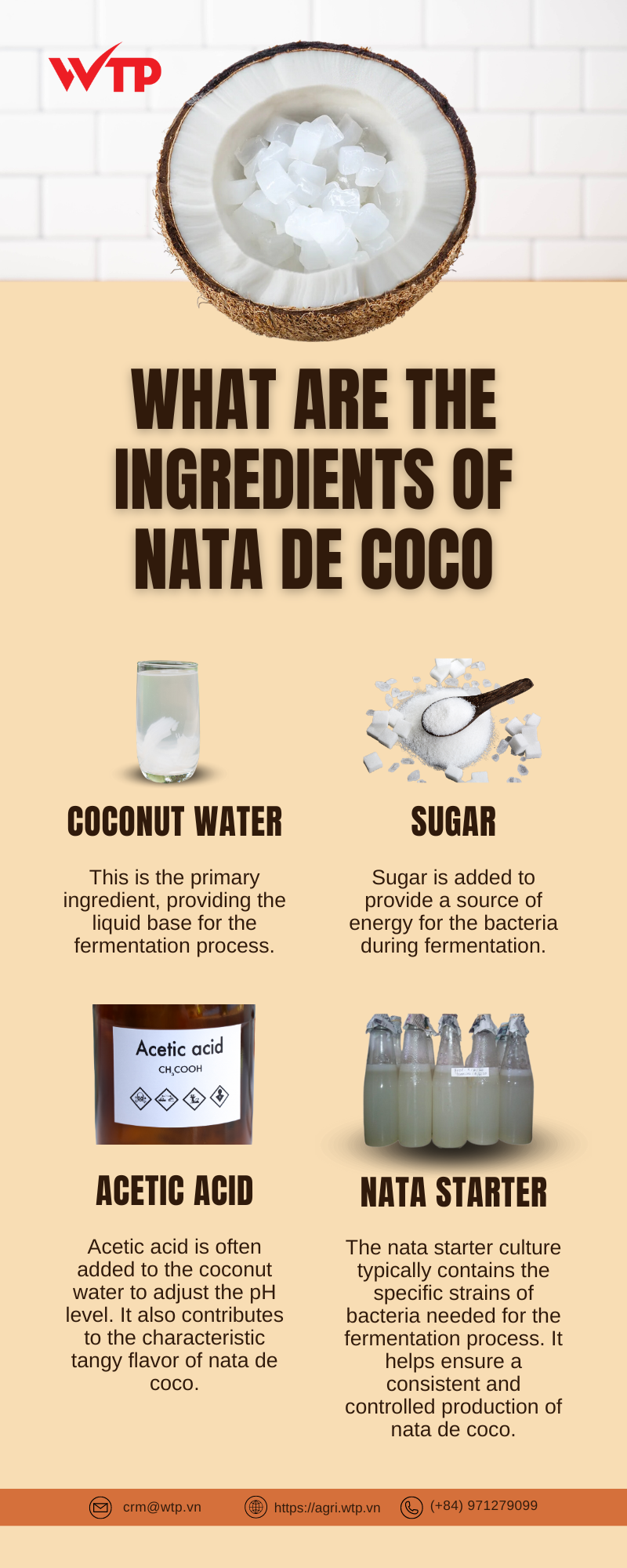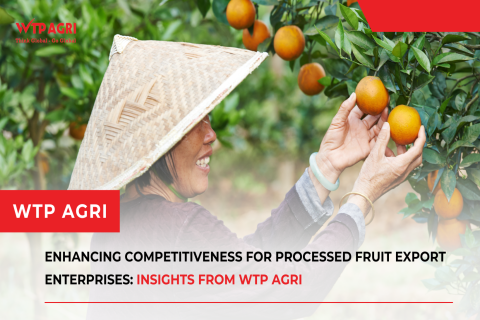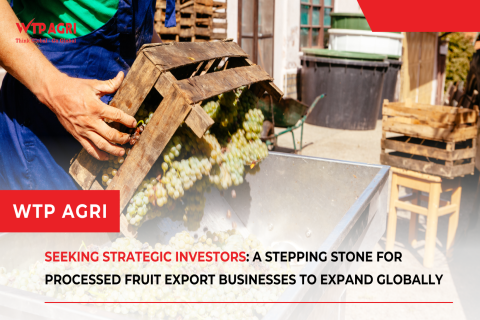WHAT ARE THE INGREDIENTS OF NATA DE COCO?
Nata de coco is a unique delicacy made from coconut water fermented by the bacterium Acetobacter Xylinum. It brings a delicious aroma, crisp texture, and numerous health benefits.
Nata de coco, with its chewy texture and refreshing sweetness, is an indispensable ingredient in many traditional desserts and beverages across Southeast Asian cultures. Originating from the Philippines, nata de coco is not only a tasty treat but also a symbol of richness and diversity in the tropical fruit industry. Behind the allure of nata de coco lies the secret of its four essential components, each playing a distinct role in the production process and creating the final product. Let's explore these four components to understand better how nata de coco brings unique flavors and sensations to your tropical fruit products.
-
Coconut Water
Coconut water is the primary and most crucial component in the production of nata de coco. Extracted from young coconuts, coconut water provides not only a natural flavor but also contains a large amount of sugar and essential nutrients for bacterial growth. Particularly, coconut water from young coconuts is of high quality and rich in minerals, giving nata de coco its distinctive sweetness and translucent color.
-
Acetic Acid
Acetic acid plays a vital role in the production process of nata de coco. When Acetobacter Xylinum bacteria digest sugar in coconut water, acetic acid is produced. This acid helps create the necessary acidic environment for bacterial growth and the formation of the gel-like structure of nata de coco. It also regulates the fermentation process, ensuring the final product's quality. That's why acetic acid is an essential part of making nata de coco.

-
Sugar
Sugar is an indispensable component in the production of nata de coco, determining the flavor and sweetness of the final product. When bacteria digest sugar in coconut water, they produce a type of acid, creating a natural sweetness and giving nata de coco its distinctive and appealing taste. Adjusting the amount of sugar in the production process is a crucial step to ensure that nata de coco has the right level of sweetness and meets consumers' taste preferences.
-
Nata Starter
Nata starter is a type of bacteria, usually Acetobacter Xylinum, used in the production process of nata de coco. This bacteria digests sugar in coconut water and creates the gel-like structure of nata de coco. It also helps control the fermentation process and ensures the quality of the final product.
Nata de coco is not just a delicious treat but also a symbol of diversity and creativity in the tropical fruit industry. Understanding the essential components of nata de coco is a crucial step in producing high-quality products and meeting the increasingly diverse demands of the market.
WTP Agri, boasting over 350,000 hectares of cultivation and a network of 20 processing plants nationwide, takes pride in being a premier partner in the fruit juice concentrate. Our extensive scale not only allows us to grasp new flavor trends but also ensures top-tier quality. If you are seeking a reliable supplier of new flavor fruit juice concentrate in Vietnam to embark on the journey of conquering these emerging trends, WTP Agri is your most dependable choice.
Do not hesitate to reach out to us for further insight and exploration into how we may contribute to the sustainable development of your enterprise. Contact us by filling out the contact form which you can find on this page. Either get in touch with our team at agri.crm@wtp.vn or give us a call on (+84)971 279 099. And remember we can also provide tailored service if you need it.
News Related
- Dried Fruits Import: Attractive Business Opportunity for International Businesses
- 5 delicious and refreshing nata de coco drink recipes
- A step forward in bilateral cooperation between Vietnam - the United States
- Advantages of shifting the fruit juice supply chain to Vietnam
- Aloe Vera Juice – Manufacturer and Supplier

 Vietnamese
Vietnamese  Korean
Korean Japanese
Japanese Chinese
Chinese


